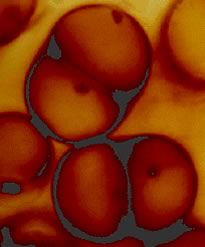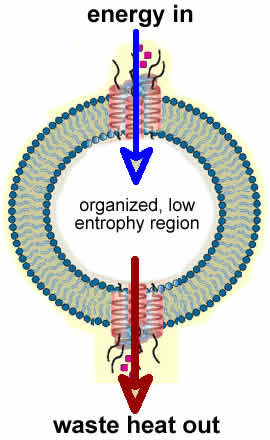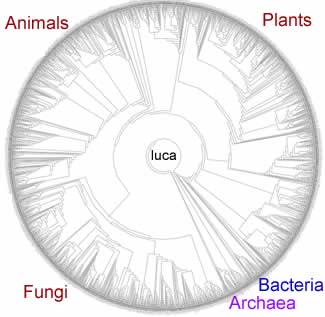However, a membrane built only of lipids poses a barrier to
the movement of energy rich molecules into the cell, and waste
products out.
In all organisms known, these "transport" functions are carried
out by membrane
proteins. These are molecular machines that
use energy to move specific molecules into and out
of the cell.
All living organisms have plasma membranes built using the same
basic components, lipids to generate the basic barrier and proteins
to control movement of materials across the barrier.
Within the membrane, there is concentrated solution of proteins
and other molecules and molecular complexes known as the cytoplasm –
it contains a number of distinct structures, such as ribosomes. Within
the cytoplasm is the genetic material, composed of DNA.
In prokaryotic organisms
(bacteria and
archaea)
the genetic material is embedded in the cytoplasm, in eukaryotic organisms
(like us humans), the genetic material is located
within a distinct compartment, the nucleus,
connected to the cytoplasm by nuclear
pores.
Remarkably enough, bacterial, archaeal and human (eukaryotic)
cells all have the same basic type of cytoplasmic structure.
If we think of the definition of a cell, it really comes down
to a plasma membrane enclosed cytoplasm and also contain genetic
material.
|
 Fossil
cells
Fossil
cells 
